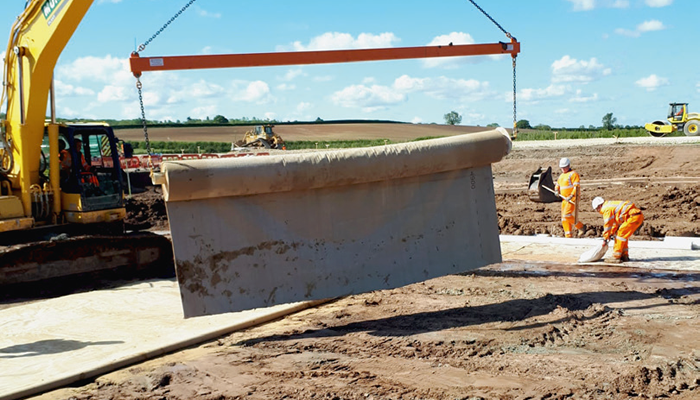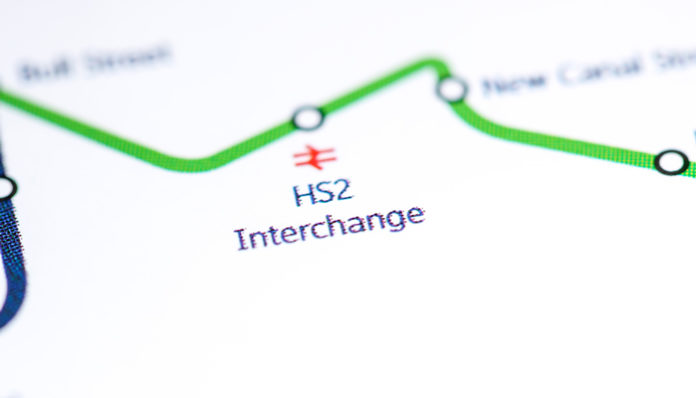HS2 is a new high-speed railway under development in the United Kingdom. It will link up London, the Midlands, and the North along lines that serve eight of the country’s 10 largest cities. This project update comes from NAUE News #50.
**
The state-of-the-art HS2 high-speed line is a critical component in the UK’s low carbon transport future. It will provide much-needed rail capacity across the country and will quickly enhance railway connectivity in the North and Midlands. HS2 is widely viewed as an efficiency-oriented way to help rebalance the UK economy.
The new railway line takes fast trains off the existing railways and places them on their own dedicated tracks, thus better connecting major towns and cities. Slower, local trains can utilize the existing lines, which in turn frees up space across the country for many more commuter services and freight trains.
HS2 & PROTECTING THE ENVIRONMENT
A lot of new infrastructure is part of the HS2 plan. High-speed trains will travel between London and Birmingham on 140 miles of dedicated track. They will pass through more than 32 miles of tunnels and over 10 miles of viaducts, delivering quicker journeys on more trains with more seats. This first phase has a funding envelope of £35-45 billion and will open between 2029 and 2033.
NAUE was approached by the engineering consultancy Ramboll to propose a suitable product to be used as lining system for an attenuation pond. The initial specification was for a puddle clay. However, the contractor was unable to find a suitable source, so they sought suitable alternatives.

The attenuation pond was needed in the short term to manage runoff from railway construction activities (potential for hydrocarbons). In the long term, the pond would be used to manage the runoff from the HS2 line (potential for heavy metals from brake linings, hydrocarbons from trains).
MORE GEO: Geosynthetics for Reinforcement in Dykes
NAUE discussed the use of both Bentofix® NSP 4900 and the PE-coated version X2 NSP 4900. After analysis of the short and long-term potential for contaminants in the runoff, Bentofix® X2 NSP 4900 was used to ensure suitable protection against potential groundwater contamination from runoff.
Bentofix® X2 NSP 4900 is a shear strength transmitting geosynthetic clay liner (GCL). The robust geotextile cover and carrier layers provide exceptional strength in the installation while the addition of a polymeric coating on one side of the GCL enhances the containment performance of the liner. It is stronger against the potential contaminants in runoff than a standard GCL and the coating also improves performance against roots and desiccation. The use of high-quality sodium bentonite powder in the core of the product plus edge impregnation of bentonite for each panel ensures a very low permeability for the attenuation ponds.
The GCL used for the HS2 is as innovative as the high-speed railway itself.
Find other case studies and learn more about NAUE’s extensive record in infrastructure with geosynthetics at www.naue.com.












